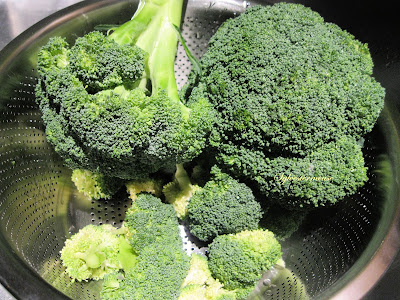Good makeup brushes are an excellent investment for anyone who wears makeup.
Whether you apply a full face of makeup or just a bit of foundation and blush,
the right tools can make all the difference in achieving beautiful results
with your makeup application. But whether you choose to invest in high-quality
makeup brushes or inexpensive ones, proper care is important for many reasons
including the effectiveness and longevity of these beauty tools as well as
good hygiene.
Today I'm reviewing my tried-and-true method for cleaning makeup brushes
quickly, easily, gently, and thoroughly using either a solid makeup brush
cleanser bar (my preferred method) or a liquid brush shampoo.
A Step-by-Step Guide to Cleaning Makeup Brushes Using a Solid Brush
Cleanser
In this step-by-step guide, I'll walk you through the easy
process of using a solid makeup brush cleanser to clean your beloved brushes.
Step 1: Gather Your Supplies
Collect your dirty makeup brushes, a solid brush cleaner of your choice, a clean towel, and (optional)
either mesh brush sleeves or a makeup brush drying rack. (I have linked my favorite recommended makeup brush cleaning supplies further down in this article.) Place these next to
your bathroom sink.
Step 2: Wet the Lower Two-Thirds of the Brush Bristles
Run a moderate (not strong) stream of lukewarm water in your sink. Take one of
the dirty makeup brushes and wet just the tips of the bristles under
the running water. Take care to keep the upper part of the bristles where
they meet the handle dry, since getting this area wet can loosen the glue
that holds the bristles in place and cause the brush to shed.
Step 3: Swirl the Wet Bristles on the Solid Cleanser
Rub the wet brush gently over the surface of the solid makeup brush cleaner in
circular motions. Don't push down, just swirl across the surface with the
lower part of the bristles to create a rich lather, making sure to avoid the
top where the bristles meet the handle. Lathering the cleanser and working it
into the bristles will help break down and lift away impurities such as makeup
residue, oils, and bacteria.
Place the tips of the wet, soapy bristles in the lid of the solid brush cleanser jar, then tap them against the inside of the lid repeatedly, rotating the brush to work the cleanser into the bristles on all sides. Don't press hard or push—you want to avoid getting the cleanser lather on the topmost part of the bristles, where the water can wick up inside the ferrule (the metal band inside which the tops of the bristles are glued into the handle), which can weaken the glue and cause premature shedding.
Step 4: Rinse Thoroughly
Rinse the inside of the lid, then fill it partway with clean lukewarm water. Again, tap and swirl the tips of the brush inside the lid to rinse out the lather. Pour out the dirty water, rinse and refill the lid with clean water, and repeat. (Depending on how much makeup is on the brush, you may need to repeat steps 3 and 4 a few times.) Repeat this rinse step until the water runs clear, indicating that the brush is clean.
I made this video to demonstrate how to properly wet the bristles, lather them
on the solid brush cleanser, and rinse them in the brush cleanser lid to avoid
wetting the tops of the bristles.
Step 5: Shape and Dry
Gently reshape the brush bristles to their original form with your fingers and
allow them to air dry. You have three air-drying options:
-
Slide a mesh brush guard sleeve over each brush, starting from the handle
tip and sliding the guard down to the bristles. Note: These mesh sleeves are also great for protecting your brush bristles when you are traveling.
-
Use a brush drying rack. Insert the handle of each brush from the underside of the rack through the flanged silicone inserts in an appropriately-sized hole, taking care to center the handle so the bristles point straight down.
-
Lay the brushes flat on their sides on a clean towel. Avoid leaving them
upright, as water can seep into the handle and damage the brush over time.
Once your brushes are completely dry, store them in a brush case to keep them clean and dust-free until you're ready to use them.
 |
| Makeup brush cleaning supplies: Solid cleanser, liquid brush shampoo, mesh brush guards, collapsible acrylic brush drying rack |
How to Wash Your Makeup Brushes Using Liquid Brush Shampoo
Follow the same steps as for using a solid brush cleanser, except:
-
Use any shallow, clean, medium-sized jar lid in place of the solid cleanser
lid.
-
Squirt a drop of liquid brush shampoo into the lid, swirl the damp bristles
in the lid to work in the soap and create a lather, then rinse the lid
thoroughly before filling it partway with lukewarm water and rinsing the soapy bristles as in Step 4
of the solid brush cleanser instructions.
How Often Should You Clean Your Makeup Brushes?
If you are an actress who applies a full face of heavy stage makeup several times a week, you should wash your brushes after each makeup application. For someone who wears subtle daytime makeup, cleansing your brushes weekly with either solid brush cleaner or liquid brush shampoo should be fine. If you wear makeup only occasionally, you may be able to get away with sanitizing your brushes after each use with an alcohol-based makeup brush sanitizing spray and washing them with a brush cleaner and water every two or three weeks.
Maintaining clean makeup brushes is an essential part of any beauty routine. With the use of a solid makeup brush cleaner, this process becomes quick and effective. Incorporate this simple routine into your beauty regimen to ensure your brushes remain in top-notch condition, providing you with flawless makeup application every time.
Recommended Supplies for Cleaning Makeup Brushes
These are the cleaners and related tools and supplies I recommend to keep your makeup brushes clean, sanitary, and performing well for a long time.
Why It's Important to Wash Your Makeup Brushes Frequently
Cleaning makeup brushes on a frequent, regular schedule is essential for maintaining skin health,
preventing bacterial buildup, preserving makeup quality, and promoting good
hygiene habits. It's a simple yet crucial step in your beauty routine that
contributes to both the longevity of your brushes and the health of your skin.
Preventing Bacterial Buildup
Makeup brushes come into contact with the skin, which naturally harbors
bacteria. Over time, these bacteria accumulate on the bristles of the brushes.
Regular cleaning helps prevent the growth of harmful bacteria that can lead to
skin irritations, breakouts, or infections.
Maintaining Skin Health
Dirty brushes can transfer oils, old makeup, and bacteria to your skin,
potentially causing clogged pores and breakouts. By keeping your brushes
clean, you reduce the risk of introducing these unwanted elements to your
skin, promoting a healthier and clearer complexion.
Preserving Makeup Quality
The residue left on makeup brushes can contaminate fresh makeup products, altering their
color, texture, and performance. Regularly cleaning your brushes ensures that
your makeup applies smoothly and accurately, maintaining the quality and
longevity of your cosmetic products.
Preventing Cross-Contamination
Using the same brush with different makeup products, such as foundations, blushes, and powders, without cleaning it in between applications can lead to
cross-contamination. This can affect the color accuracy of your makeup and may
cause unintended combinations that don't complement each other. You don't necessarily need to wash the brush before using it with a second or third type of makeup in a single sitting; spraying it with an alcohol-based makeup brush cleaning spray and wiping it on a clean microfiber cloth or paper towel in between using it for different makeup products is fine.
Enhancing Makeup Application
Clean brushes perform better for makeup application. Dirty brushes can carry
remnants of previous products, causing colors to mix or appear muddy. Clean
brushes help you achieve more precise and beautiful makeup looks and give you better control.
Prolonging Brush Lifespan
Regular cleaning helps maintain the integrity of the brush bristles.
Accumulated makeup, oils, and bacteria can damage the bristles over time,
leading to shedding and a shorter lifespan for your brushes. Cleansing them
properly on a regular basis ensures that they will remain in good condition longer.
Reducing Allergic Reactions
For individuals with sensitive skin or allergies, using dirty brushes can
trigger adverse reactions. Cleansing your brushes properly and frequently minimizes the risk of
irritation and allergic responses by removing potential allergens and
irritants from the bristles.
Promoting Good Hygiene Habits
Regularly cleaning your makeup brushes is part of maintaining good personal
hygiene. Just as you wash your face and remove your makeup before bedtime,
cleaning your brushes should be a routine practice to ensure your overall
skincare and makeup regimen is as healthy as possible.
The Best Way to Clean Makeup Brushes Without Ruining Them by Margaret Schindel
Read More
Beauty Reviews by Our Review This Reviews Contributors
Read More
Product Reviews by Our Review This Reviews Contributors
Note: The author may receive a commission from purchases made using links found in this article. “As an Amazon Associate, Ebay (EPN), Esty (Awin), and/or Zazzle Affiliate, I (we) earn from qualifying purchases.”




























































